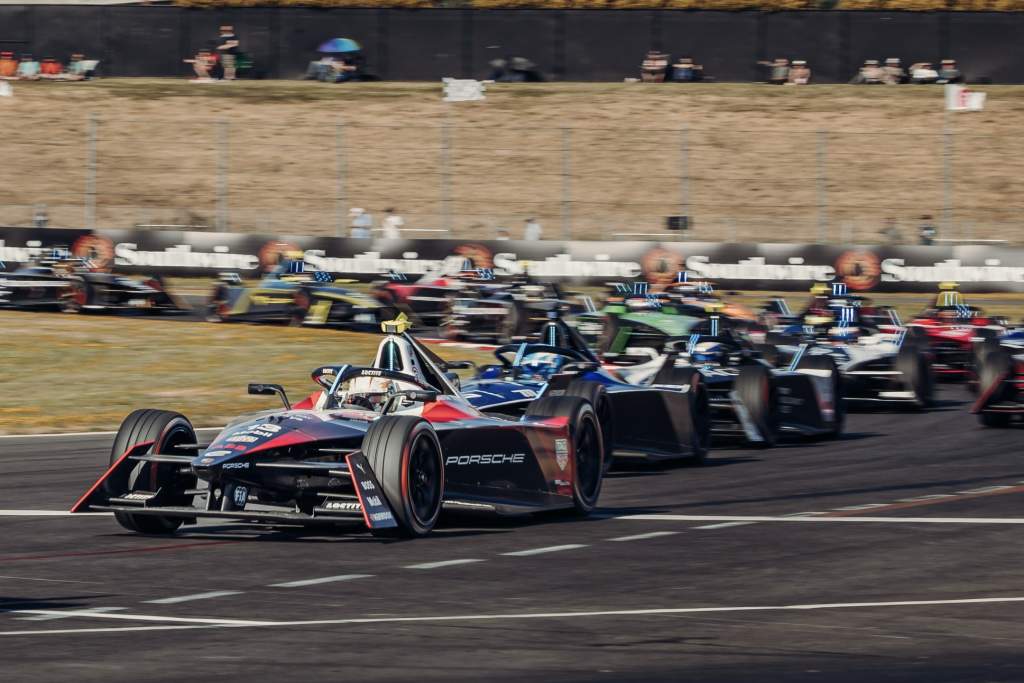Lucas di Grassi light-heartedly predicted pre-weekend that Formula E’s Portland E-Prix might break all records for the amount of overtaking in a single motor race.
That’s a hard stat to verify but the 403 passes that FE put out as the official statistic is certainly ample. That’s an average of 12.6 overtaking moves per lap.
And the sight of the field four or five abreast on the straights and up to three abreast in the corners as everyone tried to save maximum energy while jostling towards the front – but not into the lead itself – was certainly unusual.
It all happened because using the flowing normal IndyCar layout at Portland, bar a slight chicane profile tweak, gave the FE cars fewer opportunities to save energy with lifting and coasting than usual and a lack of regeneration chances compared to the series’ traditional tight and twisty street tracks. Add in the fact that being in the slipstream helped hugely for energy-saving and leading the race did the opposite, and it was a recipe for the ‘peloton’ racing of the Gen3 era to get even more extreme.
But was all that a good thing? Here are our writers’ thoughts:
THIS IS NOT FORMULA E RACING AS WE KNOW IT
Sam Smith
There are plenty of basketball fans in the Formula E paddock but I confess I’m not one of them.
I’ve never really got the high-energy sport and its constant end-to-end basket goals and mad 114 to 112 scorelines.
So with the current occasional style of Gen3 Formula E racing I’m in a bit of a personal moral tangle.
On one hand it is the same for everyone, especially on open and expansive track like Portland, which was a great challenge last weekend. On the other though, Portland is clearly less suitable for the series than classic Formula E tracks like Diriyah, Rome and Monaco, and the lack of defined hard-braking areas contributed significantly to the extreme peloton racing we saw there.
It’s racing but not as we know it. And while that is probably quite healthy for Formula E’s self-promoted image as an industry agitator and innovator, it leaves one with a feeling akin to being a bit bloated after a big dinner.
400-odd overtakes is actually an irrelevant stat, good for TV and promoters but meaningless.
To give you a better perspective try to process this. Sam Bird went from 20th and last place to third position between laps 17 to 19 last Saturday. That was the value of the ‘overtaking’ we are talking about.
You could almost lip-read the ‘what the f*** is going on’ reactions of the crowd in the leaf-bedecked Portland bleachers last Saturday as the cars ‘blasted’ off the grid like they were in a sack race for a geriatric sports day.
But here’s the thing. From what I saw the crowd at Portland were not predominantly IndyCar or NASCAR fans. These were families and groups of mates out for something new, and against all odds, I think they kind of liked it.
So perhaps racing in a new style will generate new fans and all will be well. Overall the outcome of this season’s racing is not so random: after 12 races wins have been split five for Porsches, five for Jaguars and two for the DS package.
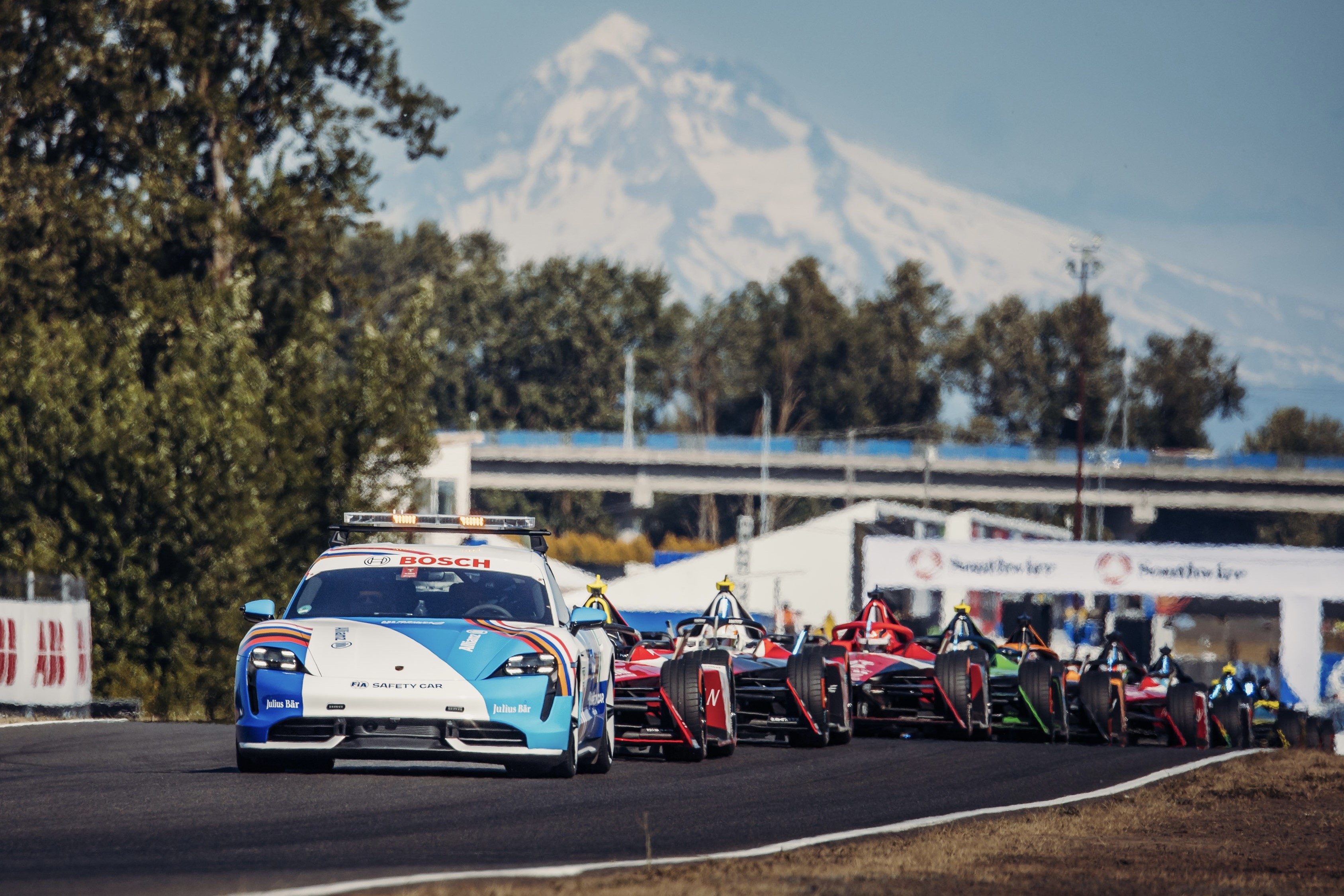
The safety factor is a major concern, though. Nico Mueller’s shunt came as a legacy of contact from an incident triggered via an accordion effect of cars bunching.
Jean-Eric Vergne also had a lucky escape when he missed the rear of Mortara’s Maserati by a few centimetres and instead speared onto the grass. At Rome that would have been a wall.
Drivers are now openly concerned that inadvertent aerial incidents will be inevitable if such extreme lift-and-coasting continues to be commonplace in some races.
Certainly, it also takes a lot to get your head around the fact that essentially no one wants to lead a motor race.
It will be different in Rome and London where more balanced and meritocratic/hierarchical races will be offered up. But once or twice a season the extreme energy-saving races could be quirky fun all over again.
But please let’s not make it basketball every weekend.
IT FEELS TOO FABRICATED
Alice Holloway
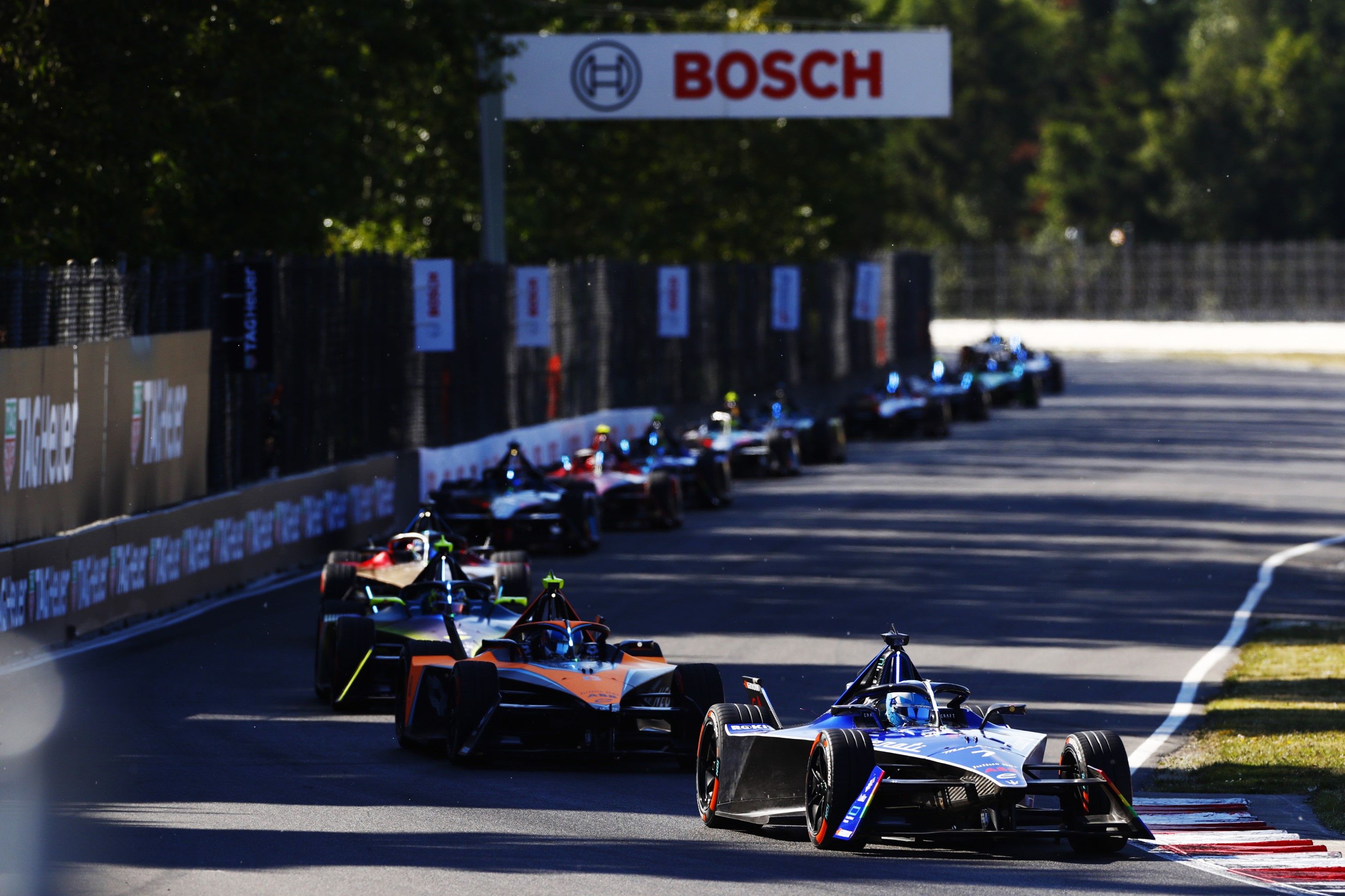
Certainly, the phrase ‘action-packed’ can be used to describe the Portland E-Prix, and when compared to other energy-sensitive races like Sao Paulo, this one seemed to have a little bit more going for it.
It’s still a bizarre thing to have drivers admitting before a race that they don’t really want pole position and don’t want to lead, causing an unusual dilemma in how to view the true enigma of this type of racing.
The openness of the Portland International Raceway obviously invited far easier overtakes, and for those drivers who aren’t in championship contention, it was a chance to ‘send it’ and get track position.
The race however in the midfield, where the accordion effect was extreme and frankly borderline dangerous at times, bred a kind of lo-fi demolition derby.
The energy sensitivity leads to a type of racing that is actually very atypical of Formula E and does seem to not be favoured by the drivers. However, the action is high and dramatic and seemingly has fans on the edge of their seat from lights to flag.
Certainly, the overtakes are more on the fabricated side and the action seems more forced, and like DRS in Formula 1 it doesn’t show Formula E in its best light.
Great for the show, yes, and great for spectators who may be being introduced to the electric series, but when the championship prides itself on having one of the top-tier talent pools in worldwide motorsport, calculated moves and precision decisions should be favoured over an easy pass all day long.
Not wanting to lead a race anymore is as counter-intuitive as it is confusing. Yet perhaps if it is just once or twice a season it can at least be partially digested and understood.
THIS STILL REQUIRES SKILL
Glenn Freeman
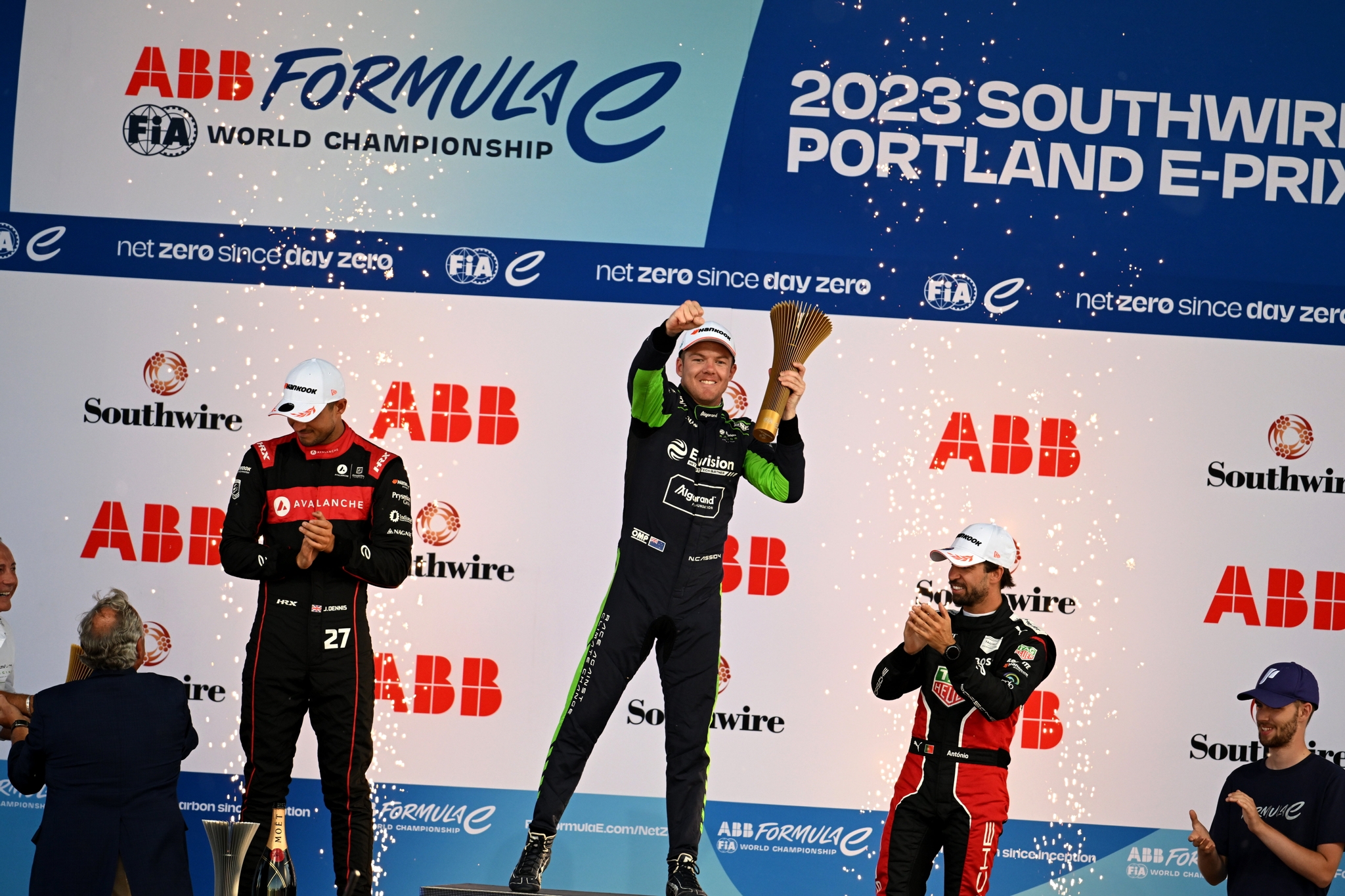
I wasn’t sure about this style of racing when it first emerged, but it’s growing on me.
One big positive is that people are winning on merit, which is a big plus compared to the chaos caused by the previous qualifying format that almost always disadvantaged the championship leaders. But this season we are seeing the same names up the front from race to race, so there is clearly a skill to mastering this form of racing and it’s proving to be enough of a technical and strategic challenge for the teams as well.
You still have to do the best job to win, it’s just the parameters of that job are a bit different to a conventional race.
I’m fine with that. I don’t need all my motorsport to be the same. What’s wrong with some variety? There’s little benefit to Formula E just serving up a clone of F1 racing but with electric power.
The big question is if this style of racing will get old quite quickly. Is there a point coming where the novelty wears off and people might as well only bother watching the last five laps?
I can’t answer that yet. But for now I’m enjoying it.
THE NOVELTY IS WEARING OFF
Josh Suttill
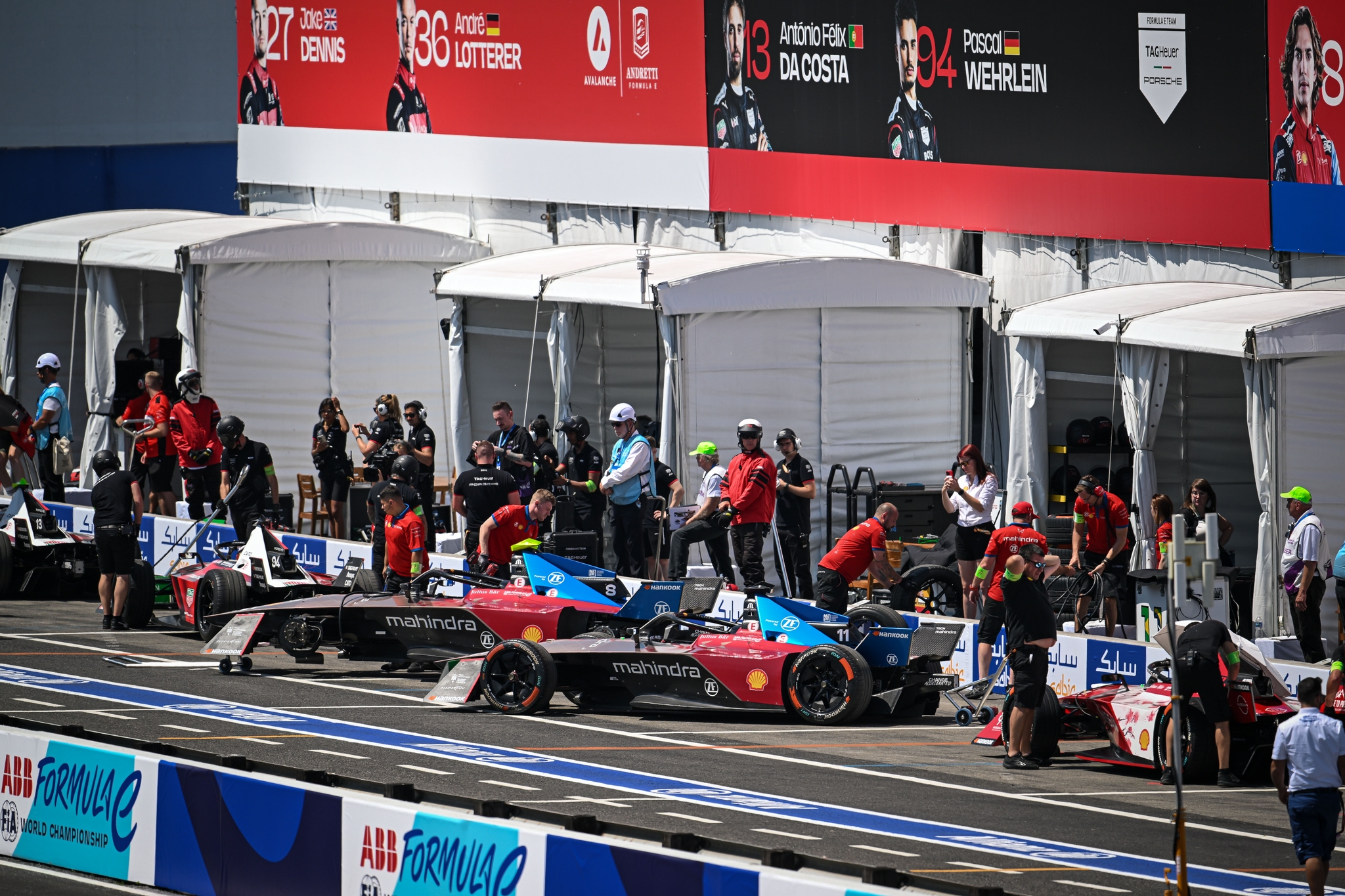
I’ve loved Formula E through its numerous ups and downs so I was willing to give Gen3’s new breed of ‘peloton’ racing a chance.
But unfortunately I’m beginning to find races like Portland tiresome. While at first it was a different and unique spectacle that added the kind of strategic flair and variation that Formula E has thrived on in the past, it quickly began to feel pointless.
In the respect that you could have only tuned into the final five or 10 minutes of the Portland race and effectively got the same ‘lap one’ sensation of most standard racing series as well as a proper view of the lead fight.
Yes every driver should ‘aim to win at the slowest possible speed’ but deliberately allowing yourself to fall from first to fourth means something has gone a step too far. And it’s the kind of strategy that just alienates and confuses the casual viewer, with even the most seasoned viewers struggling to differentiate between genuinely and deliberately conceded positions, let alone keep track of all 403 overtakes.
Formula E never had a problem with generating late-race drama in a far more organic fashion, so the energy-limiting decisions taken that lead to this kind of racing just feel unnecessary, particularly when some of the non-peloton style Gen3 racing has been mega.
FINE IN A VACUUM BUT THIS CAN’T BE FE’S FUTURE
Dre Harrison
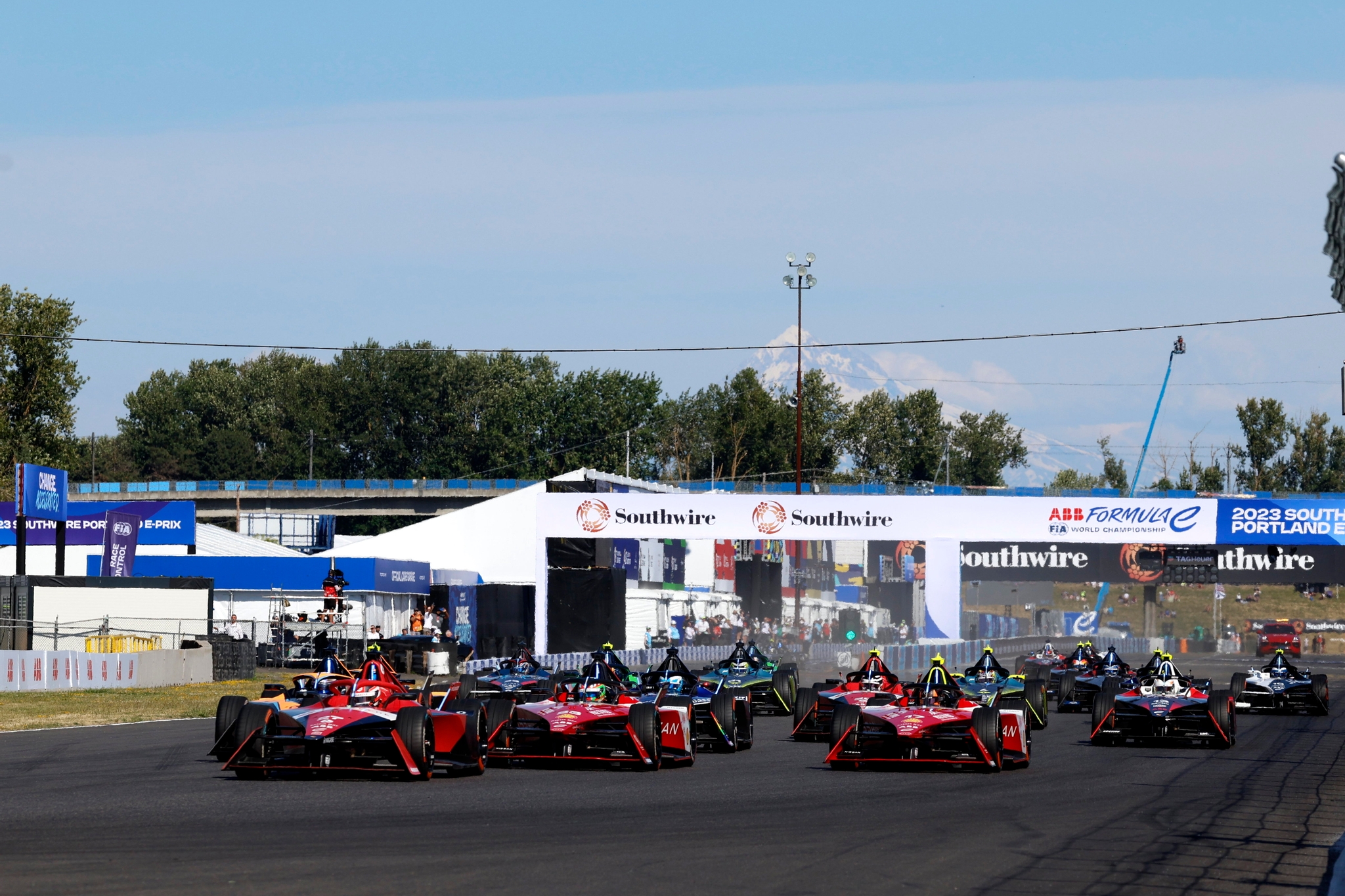
Portland felt like Formula E’s philosophy cranked up to 11, the cycling-style peloton format at its limit (seriously, I thought we were setting up for one more sprint win for Mark Cavendish).
I’ve always liked in the post-car-swaps era of Formula E how regen and saving battery can make the end of races exciting, and for the most part, it’s worked. I can totally see how in a vacuum this was an entertaining hot mess of a race that settled down a bit after the second safety car. But it does make me wonder about the direction of the series going forward.
Given FE beat its chest about having 400+ overtakes in about 25 laps of green flag racing, I wonder if this is something it will chase in the future, and if so, it goes away from what’s made the series what it is.
These cars, even moving at 170mph, looked slow on a track as large and wide as Portland was, and the pack race that developed in the first half was messy and leans into the crashfest stereotype that I think the series should be outgrowing by now.
I’ve already had doubts about the movement towards more permanent-style tracks after Jakarta was largely dull, and this hasn’t helped. I’m starting to think Formula E doesn’t know what it wants to be.
CASSIDY SHOWED WHY THIS ACTUALLY WORKS
Matt Beer
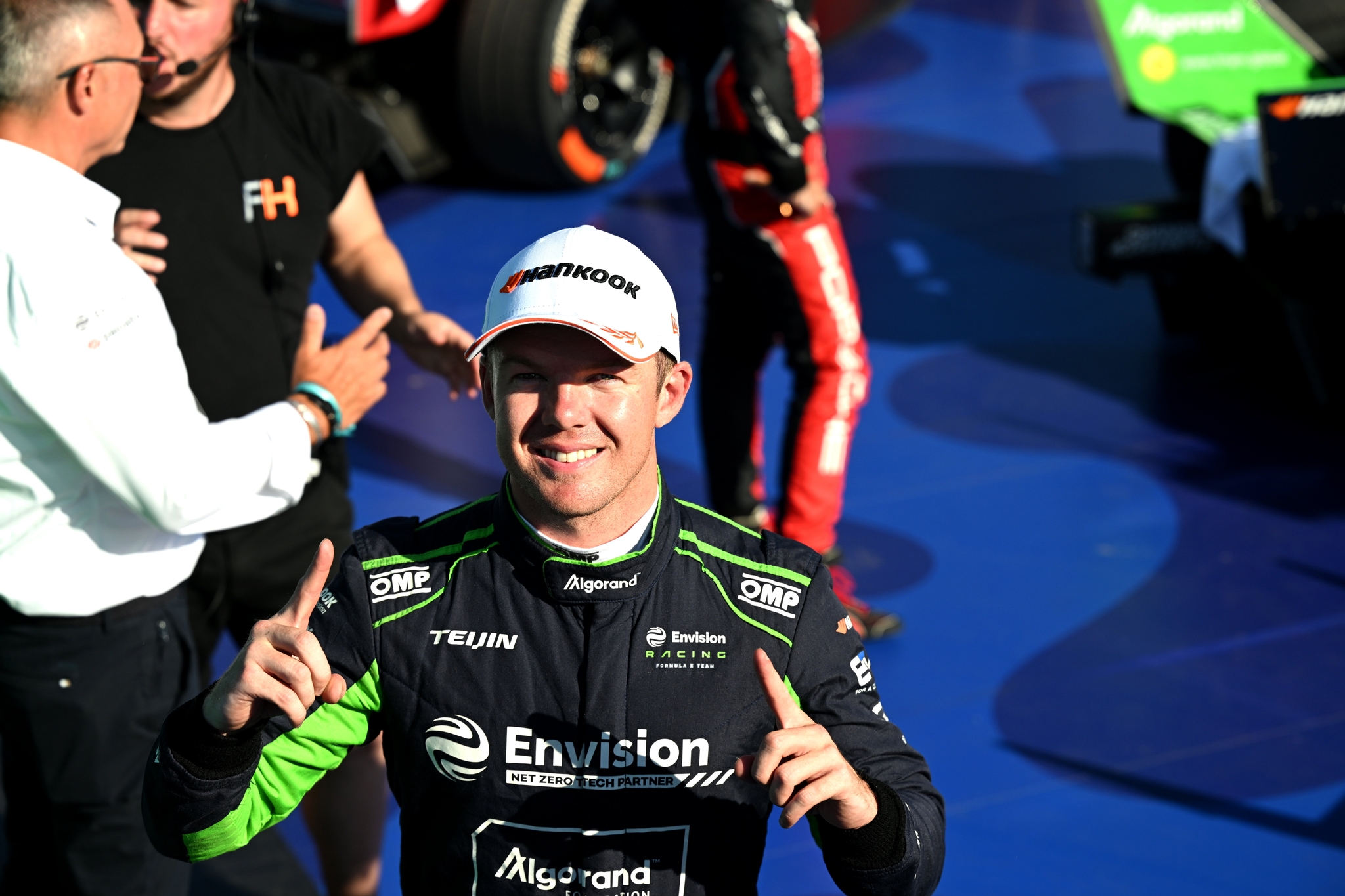
I feel like NASCAR superspeedway races are three and a half hours of wincing through needlessly destructive crashes then two minutes of seeing someone emerge victorious because they got the right draft at the right time. A victory earned by just having to do something right for about 1% of the race.
The predictions of how the Portland Formula E race would unfold made me feel it would be similarly unfulfilling. And hearing the early-laps radio traffic of drivers boasting that they hadn’t got near full-throttle yet felt pretty unsatisfying too.
But by the end, I was a fan. Purely because the way the podium trio got there showed the skill involved in handling one of these races and positioning yourself at the front when it counts and with the right amount of energy to deploy. There was an enjoyable tension about watching the tactics unfolding and being poised for the moment a break was made. A nice big bass drop in motor race form.
Polesitter Jake Dennis finished second and never fell lower than sixth. Winner Nick Cassidy led 50% of the race. In the period after the second safety car – half the race distance – podium trio Cassidy, Dennis and Antonio Felix da Costa largely monopolised the lead battle bar some Jaguar cameos and a slightly surreal brief top-three appearance for Robin Frijns. Yes there were 403 overtaking moves but a high enough percentage of them had a value in the story of how the race was won. The results were earned with skill and intelligence.
So yes please to a few more races like this. Yes please to more permanent road courses too, I actually loved the look of the Gen3 cars around this IndyCar track on qualifying laps (imagine them with softer tyres!) and I really love that FE/the FIA have got over the paranoia about racing on the same circuit configurations that traditional single-seaters use.
But variety and character are what I want most. I’m really excited that the series is concluding with its most epic street venue in Rome then the sinuous quirkiness of part-indoor ExCeL. One or two races each season that require Portland-style tactics, great. A few purely flat-out, ‘forget the energy percentage’ races, equally great. Everything in the middle, also great. Keep FE’s status as the series where you never know what’s going to happen next and when a race will feature 403 passes and when it will feature 43.


